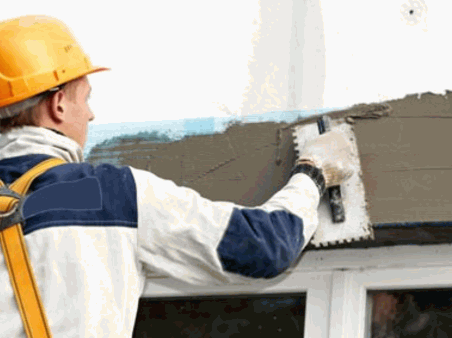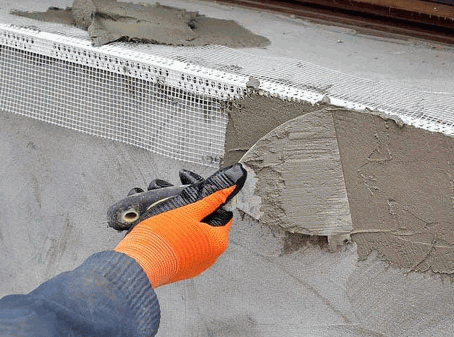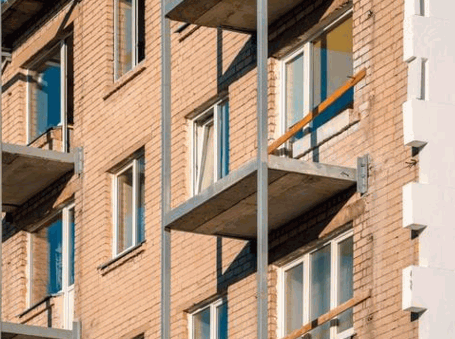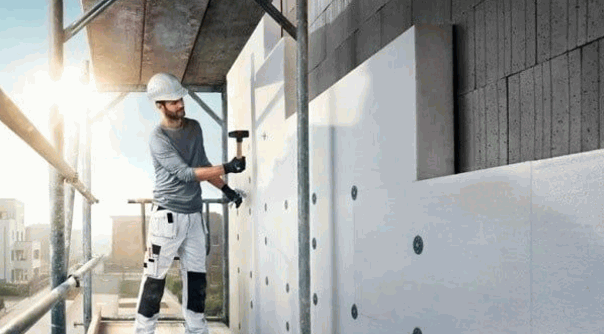External wall insulation is a highly effective method for enhancing a home’s energy efficiency while safeguarding it against diverse weather conditions. This article comprehensively examines the fundamentals of external wall insulation, emphasizing its significance, the various insulation types available, and the necessary preparations for wall installation. It delineates the step-by-step process for applying insulation and underscores the numerous benefits it provides, including reductions in energy costs, improvements to the property’s aesthetic appeal, and the enhancement of soundproofing insulation. Readers will find all the essential information needed regarding this valuable home improvement solution and the insulation effectiveness.

What Is External Wall Insulation?
External Wall Insulation (EWI) is a holistic solution aimed at enhancing the thermal performance of a building by affixing insulation boards to the exterior walls, utilizing adhesive mortar and reinforcement mesh for increased stability. This process significantly improves energy efficiency while also offering weather protection, enhancing aesthetic appeal, and preventing weather damage.
EWI is particularly advantageous for homeowners seeking to increase energy savings, reduce their carbon footprint, and engage in eco-friendly building practices. Furthermore, EWI systems accommodate the installation of a variety of insulation materials, including fiberglass insulation, and play a critical role in preventing weather-related damage, and structural issues, and promoting insulation durability over time.
Find out more: What Is Lime Plaster

Why Is External Wall Insulation Important?
External wall insulation is essential for improving the energy efficiency of buildings, as it significantly minimizes heat loss, leading to substantial energy savings, reduced energy costs for homeowners, and overall improved building energy efficiency. Additionally, it contributes to lowering the carbon footprint of a property while providing critical protection against adverse weather conditions and enhancing insulation performance.
By effectively addressing structural challenges such as moisture ingress, performing moisture checks, and enhancing soundproofing capabilities, external wall insulation plays a pivotal role in fostering a comfortable living environment.

What Are The Types Of External Wall Insulation?
When evaluating external wall insulation, it is important to consider the various insulation types available to address diverse building requirements, insulation requirements, and preferences. Each type presents unique materials and installation methods.
Noteworthy options include:
- Rigid board insulation, recognized for its exceptional thermal performance;
- Loose fill insulation, which adapts easily to irregular shapes;
- Spray foam insulation, which provides effective air sealing;
- Insulated render systems, offer both aesthetic appeal and insulation advantages.
Each of these options has specific applications, making it crucial to select the appropriate type to achieve optimal insulation performance.
Rigid Board Insulation
Rigid board insulation is a widely regarded option for external wall insulation projects, recognized for its exceptional thermal performance, ease of installation, and insulation options. It provides a robust barrier against heat loss while preserving the structural integrity of the building.
Plus its superior thermal characteristics, rigid board insulation is composed of various materials, including polystyrene, polyisocyanurate, and fiberglass. Each of these materials offers distinct advantages, such as moisture resistance and compressive strength.
- Polystyrene: Renowned for its cost-effectiveness and lightweight nature, making it suitable for a range of building applications.
- Polyisocyanurate: Provides a higher R-value per inch, thus enhancing energy efficiency.
- Fiberglass: Offers commendable fire resistance and is often utilized in conjunction with other materials to improve overall performance.
The benefits of employing rigid board insulation include reduced energy expenses, increased comfort within living environments, and enhanced indoor air quality, making it an excellent choice for both residential and commercial properties.
Installation methods may vary; however, they typically involve cutting the boards to fit securely between framing members and affixing them using adhesive, mechanical fasteners, and ensuring proper ventilation installation.
While insulation costs can differ based on the selected material and project size, the investment generally results in significant long-term savings through decreased energy consumption, highlighting its essential role in improving overall building energy efficiency and insulation longevity.

Loose Fill Insulation
Loose-fill insulation comprises small particles that effectively fill gaps and irregular spaces within wall cavities, thereby serving as an efficient solution for achieving optimal thermal performance and soundproofing capabilities.
This innovative insulation material can be produced from a variety of substances, each offering distinct advantages concerning energy efficiency, insulation energy efficiency, and environmental impact. Common types include cellulose, fiberglass, and mineral wool, all of which function by creating an air barrier that significantly reduces heat transfer.
Plus maintaining warmer conditions in winter and cooler environments in summer, these materials also contribute to soundproofing by minimizing noise pollution. The installation process typically involves utilizing specialized equipment to blow the loose fill into the desired areas, ensuring comprehensive coverage.
- Cellulose: Composed of recycled paper products, this material is treated for fire resistance and possesses excellent thermal properties.
- Fiberglass: This option is resistant to moisture and mold, offering enhanced durability.
- Mineral Wool: Recognized for its fire-resistant qualities and soundproofing benefits.
Maintaining loose-fill insulation is essential; periodic inspections ensure that it remains evenly distributed and effective in conserving energy. With appropriate installation and maintenance, loose-fill insulation represents a reliable choice for energy-efficient building solutions.

Spray Foam Insulation
Spray foam insulation is a highly versatile insulation solution that expands upon application, effectively filling gaps, providing superior air sealing, and improving insulation systems’ effectiveness. This characteristic significantly enhances thermal performance and energy savings for external wall insulation projects.
The application process for spray foam insulation typically necessitates professional installation due to the specialized equipment and techniques required. Initially, the surface where the foam will be applied must be prepared to ensure it is clean and dry.
As the foam is sprayed, it expands to seal cracks and voids, which is critical in minimizing air leakage. This property is essential for improving overall energy efficiency, as it assists in maintaining consistent indoor temperatures and reducing heating and cooling costs.
When considering safety during the installation, it is imperative to ensure proper ventilation to mitigate exposure to the chemicals used in the foam, adhering to insulation safety standards. While the costs associated with spray foam insulation are generally higher than those of traditional insulation types, such as fiberglass or cellulose, the long-term savings from reduced energy bills often justify the initial financial investment.
In comparison to these alternatives, spray foam insulation offers superior air sealing and moisture control, making it an appealing option for homeowners seeking to enhance their residence’s energy performance.
Benefits: Exceptional air sealing, high R-value, and reduced energy expenditures.
Considerations: Installation costs and safety precautions during application.

Insulated Render Systems
Insulated render systems effectively combine insulation materials with a decorative finish, providing both aesthetic appeal and weather protection while ensuring optimal insulation performance in external wall applications and aiding in insulation restoration.
These systems are specifically designed to enhance a building’s facade, achieving a seamless integration of form and function, and ensuring insulation maintenance. By utilizing high-quality insulating materials, they serve as a barrier against thermal loss, thereby improving the energy efficiency of properties.
During installation, professionals typically apply a base coat over the existing wall, followed by the attachment of the insulation board, ensuring fixing insulation boards secure. Once secured, a finishing coat is applied, which allows for a variety of textures and colors to accommodate individual preferences.
The options available are extensive; from smooth, modern finishes to textured, rustic appearances, homeowners can achieve their desired aesthetic while benefiting from enhanced energy efficiency and reduced heating costs.
Key benefits of insulated render systems include:
- Enhanced Energy Performance
- Aesthetic Versatility
- Weather Resistance
- Increased Property Value
The long-term advantages associated with insulated render systems, including insulation quality and insulation popularity, position them as a prudent investment for property owners seeking to upgrade the exterior of their homes.

How To Prepare For External Wall Insulation?
Preparation for external wall insulation involves thorough planning of the insulation installation process, understanding the insulation tools required, and ensuring insulation inspection to meet insulation technique standards.
Preparing for the installation of external wall insulation is a critical step that encompasses several essential processes to ensure optimal insulation performance and durability. This installation preparation may involve conducting a comprehensive moisture assessment to identify any existing structural issues, cleaning the walls to create a suitable surface for affixing insulation boards and undertaking necessary repairs to facilitate a seamless installation process.
Adequate preparation not only enhances the effectiveness of the insulation system but also prolongs its lifespan and minimizes the need for future maintenance, ultimately providing significant insulation benefits.
Check The Condition Of The Walls
Before the installation of external wall insulation, it is imperative to conduct a thorough assessment of the wall’s condition, with a particular focus on identifying any moisture-related issues or structural concerns that may affect the insulation’s performance.
Moisture content can significantly undermine the durability and efficacy of the insulation, potentially resulting in a series of complications if not addressed appropriately. Professionals should employ various insulation techniques, such as the use of a moisture meter, to accurately evaluate the humidity levels present within the walls.
Indicators of possible damage may include:
- Peeling paint or wallpaper
- Visible mold growth
- Damp spots or discoloration
- Soft or deteriorating wooden structures
Proactively addressing these issues not only enhances the efficiency of the insulation but also ensures the long-term stability of the building. Repair processes may involve resealing, replacing damaged materials, and improving drainage around the structure to effectively mitigate moisture accumulation.

Clean The Walls
Thoroughly cleaning the walls prior to the installation of insulation is essential for ensuring proper adhesion and optimizing the performance of the insulation boards.
Failing to address this critical step can result in various issues, including diminished effectiveness and increased energy expenses. To achieve a pristine wall surface, it is important to employ several effective insulation cleaning methods and materials.
Initially, it is advisable to remove any loose dirt, dust, or debris using a stiff-bristled brush or a vacuum cleaner. Subsequently, a mixture of warm water and a mild detergent should be applied with a sponge to eliminate grease stains and other residues. Following this, it is crucial to rinse the walls thoroughly and allow them to dry completely.
Materials Required:
- Stiff-bristled brush
- Vacuum cleaner
- Mild detergent
- Sponge
- Clean water
Preparing the wall surface is not solely about aesthetics; a clean area significantly enhances the adhesion of insulation boards, thereby contributing to a more effective insulating layer.
The integrity of the installation can lead to improved thermal performance, ultimately resulting in a comfortable living environment and reduced heating or cooling costs, while also offering protection from weather damage prevention.

Repair Any Damages
Addressing any existing damages to the walls prior to the installation of insulation is crucial, as it can prevent future complications and contribute to a successful insulation project.
Neglecting these necessary insulation repairs may result in issues that not only affect the effectiveness of the insulation but also compromise the overall integrity of the structure.
Common types of damage include:
- Cracks in the drywall or plaster
- Water stains that may indicate possible leaks
- Mold or mildew growth due to moisture accumulation
- Damage resulting from pest infestations
To evaluate these concerns, a comprehensive inspection should be conducted, which includes searching for visible signs and utilizing tools such as moisture meters to detect hidden dampness.
Recommended repair techniques may include:
- Filling cracks with suitable patching compounds
- Addressing leaks through the application of sealants or by engaging professional plumbing services
- Removing and remediating any mold growth
- Implementing pest control measures
By addressing these issues proactively, one can enhance the overall effectiveness of insulation and ensure its long-lasting performance.

Remove Any Obstacles
Removing any obstacles from the wall surface is a critical component of the installation preparation process, ensuring that the insulation boards can be secured effectively and efficiently, preventing future issues.
Before commencing any insulation project, it is imperative to evaluate the wall area for various obstacles that may require removal. These obstacles may include:
- Fixtures: Items such as electrical outlets, light switches, or built-in shelves can impede the installation process and should be addressed as a priority.
- Old Insulation: Previous insulation materials may be compromised and could harbor mold or pests; therefore, they must be removed with care.
- Debris and Dust: A thorough cleaning of the surface is essential to establish a secure bond for the new insulation.
Adhering to best practices during the removal process, including the use of appropriate tools and personal protective equipment, will not only expedite the installation but also enhance the overall effectiveness of the insulation project.
By meticulously preparing the wall surface, one can significantly contribute to improving energy efficiency and comfort within the space.
What Are The Steps To Apply External Wall Insulation?
The application of external wall insulation entails a series of systematic steps designed to ensure optimal adhesion and insulation performance. This process begins with the installation of insulation boards, followed by the application of reinforcement mesh and finishing coats.
The proper execution of each step is essential for maximizing the effectiveness and durability of the insulation, ultimately contributing to long-term energy savings and protection against weather elements.
Fix The Insulation Boards
Fixing insulation boards securely to the exterior walls represents the first and most critical step in the external wall insulation installation process. This foundational action significantly influences the overall effectiveness of the insulation system. Ensuring that the boards remain firmly in place is essential to prevent thermal bridging, which can lead to energy loss.
In terms of materials used for securing the insulation boards, adhesive mortar is commonly preferred due to its strong bonding capabilities. Various types of adhesive mortars are available, including:
- Fiber-Reinforced Mortar: This type enhances mechanical properties and accommodates minor building movements.
- Thin-Set Mortar: Ideal for lightweight boards, it provides a reliable bond without adding unnecessary weight.
- Premixed Adhesives: These are convenient and easy to apply, ensuring a uniform layer for optimal adhesion.
To ensure the proper placement of the boards, it is crucial to follow a systematic approach:
- Begin by preparing the wall surface, ensuring it is clean and dry.
- Apply the adhesive in a zigzag pattern or in dabs around the perimeter.
- Press the board firmly into place and adjust as necessary for alignment.
By employing suitable materials and techniques, one can achieve maximum thermal performance, thereby creating a comfortable and energy-efficient environment.

Apply The Base Coat
Applying a base coat over the fixed insulation boards is a crucial step in creating a smooth surface for subsequent layers and enhancing insulation performance.
This foundational layer typically comprises materials such as cementitious or acrylic compounds, which not only provide necessary adhesion but also help to bridge any gaps or imperfections present in the insulation boards.
To achieve optimal results, it is essential to ensure that the surface of the insulation is clean and dry prior to application. Utilizing a large trowel or a roller, the base coat should be applied evenly, maintaining a consistent thickness across all areas. This step is critical, as it directly impacts the durability and effectiveness of the entire insulation system.
It is imperative to allow the base coat to cure properly before proceeding with the application of the subsequent layer, as neglecting this can compromise the overall integrity and efficiency of the insulation.

Install The Reinforcement Mesh
The installation of reinforcement mesh over the base coat is a crucial step that enhances structural stability and improves the insulation performance of the system.
This additional layer not only increases the durability of the wall but also ensures that the insulation remains effective against various environmental factors. The types of reinforcement mesh commonly employed in these applications include:
- Fiberglass Mesh: Recognized for its flexibility and resistance to moisture, making it suitable for various surface finishes.
- Steel Mesh: Offering enhanced strength, it is ideal for high-stress areas requiring additional support.
- Polyester Mesh: Lightweight and resistant to cracking, this mesh is particularly beneficial in climates characterized by significant temperature fluctuations.
Application techniques may vary, but the mesh is typically embedded in the base coat while it is still wet. This practice ensures effective bonding, creating a seamless layer that significantly contributes to the longevity and overall performance of the External Wall Insulation system, as promoted by trusted names like ProGuard Exteriors and YES Energy Solutions.

Apply The Finishing Coat
The final step in the application process of external wall insulation is the application of a finishing coat. This coat serves a dual purpose: it provides an aesthetically pleasing finish while also functioning as a protective barrier against weather-related damage.
This finishing coat is crucial, as it encapsulates the insulation, protecting it from the detrimental effects of moisture, ultraviolet (UV) rays, and fluctuations in temperature. By employing various formulations such as acrylic, silicone, or cement-based options, property owners can achieve a range of textures and colors that not only enhance visual appeal but also improve the durability of the insulation system.
- Acrylic finishes offer versatility and excellent adhesion, making them suitable for various surfaces.
- Silicone-based coatings provide exceptional water resistance and flexibility, making them ideal for climates that experience heavy rainfall.
- Cementitious finishes are recognized for their durability, offering a traditional appearance combined with long-lasting protection.
Selecting the appropriate finishing coat not only completes the insulation process but also significantly enhances the property’s curb appeal and market value.

What Are The Benefits Of External Wall Insulation?
External wall insulation presents numerous advantages that have a considerable effect on energy efficiency, property value, and overall occupant comfort within a building.
By enhancing thermal performance, external wall insulation (EWI) systems can result in significant energy savings, lower energy expenses, and improved soundproofing capabilities.
Furthermore, EWI offers essential weather protection, rendering properties more resilient to environmental factors while simultaneously increasing their market appeal and overall value.
Improves Energy Efficiency
One of the primary advantages of external wall insulation is its substantial enhancement of energy efficiency, achieved through improved thermal performance that effectively minimizes heat loss.
When external wall insulation is installed, the reduction in energy consumption can be significant; research indicates that residences with appropriate insulation can realize energy savings of up to 40%. This not only results in lower energy bills but also considerably reduces the carbon footprint of properties. In contrast, buildings that lack sufficient insulation demonstrate higher energy demands, leading to an increase of approximately 20-30% in energy usage during heating and cooling periods. These statistics are crucial when assessing the overall cost-effectiveness and environmental benefits of insulation.
- Enhanced Comfort: Homes equipped with insulation maintain a consistent indoor temperature, ensuring comfort throughout the year.
- Value Addition: Well-insulated homes generally exhibit higher resale values, making them more appealing to energy-conscious buyers.
Investing in external wall insulation is not merely an enhancement of living conditions; it is also a critical step towards achieving sustainable energy objectives, as suggested by studies from New York University and Rutgers University.
Reduces Energy Bills
By enhancing the thermal performance of a building, external wall insulation can contribute to reduced energy bills, yielding long-term financial advantages for homeowners.
The benefits of improved insulation are particularly pronounced during extreme weather conditions, such as the harsh winter months and sweltering summer days, when energy consumption typically peaks. For example, a standard insulated home can achieve a reduction in heating and cooling costs ranging from approximately 20% to 30%.
To illustrate this point, consider a property with an annual energy expenditure of $2,000; the implementation of external wall insulation could result in annual savings for homeowners between $400 and $600. Over a decade, these savings can accumulate substantially, reaching a total of $4,000 to $6,000, thereby providing not just a minor benefit but a significant incentive to invest in energy-efficient solutions.
Furthermore, when insulated properties are assessed within the real estate market, studies indicate that they tend to attract higher prices and facilitate faster sales due to their lower operating costs. This positions insulation not only as an effective energy-saving measure but also as a prudent financial investment, with endorsements from media like The New York Times and The Washington Post.
Increases Property Value
Investing in external wall insulation not only enhances the comfort of a home but can also significantly increase its property value and market appeal.
This strategic upgrade has become increasingly pertinent in today’s real estate market, where buyers frequently prioritize energy-efficient and aesthetically pleasing properties. Research indicates that homes equipped with high-quality External Wall Insulation often benefit from reduced energy costs and improved thermal comfort, making them more marketable, as evidenced by features in Rolling Stone and insights from YES Energy Solutions.
A case study conducted in a suburban neighborhood revealed that properties that underwent insulation improvements experienced an appreciation of up to 15% over a five-year period. Furthermore, homes featuring superior insulation have demonstrated quicker sales, often securing buyers within weeks, in contrast to others that remain on the market for months.
The correlation between insulation enhancements and property value underscores the growing demand for sustainability and energy efficiency in home-buying decisions.
Enhances Aesthetic Appeal
External wall insulation presents an opportunity to improve a building’s aesthetic appeal through the implementation of insulated render systems, which provide a decorative finish while ensuring effective insulation. DIY insulation projects are increasingly popular, with instructional content readily available on platforms like YouTube.
This approach not only enhances energy efficiency but also allows property owners to select from a diverse range of textures and colors that can complement or elevate the architectural style of their homes. By choosing various finishes, individuals can achieve a cohesive appearance that distinguishes their property within the neighborhood.
- Textured finishes: These options can add depth and character to the exterior.
- Color options: A wide palette is available to accommodate various style preferences.
- Design patterns: Custom designs can be utilized to reflect personal tastes.
The transformation of a property’s exterior through these insulated solutions can significantly enhance its curb appeal, making it more attractive to potential buyers and ultimately increasing its overall market value.


